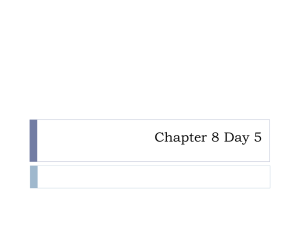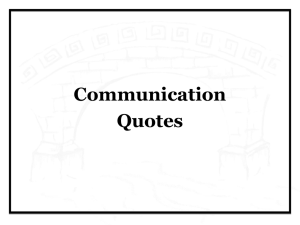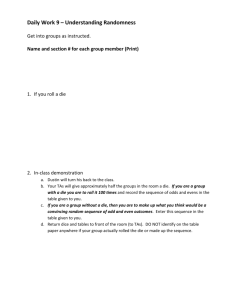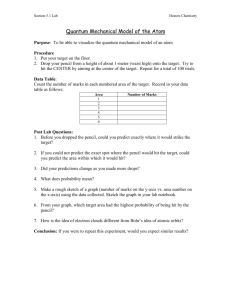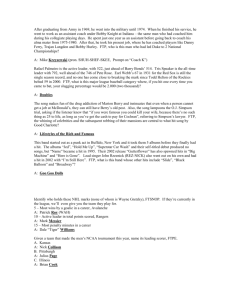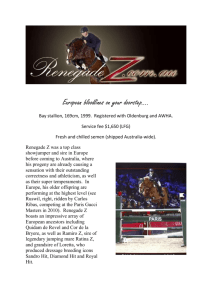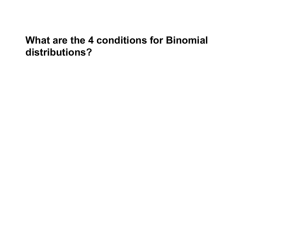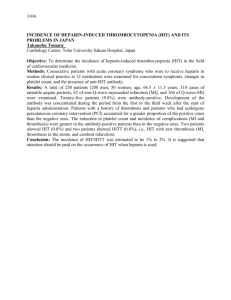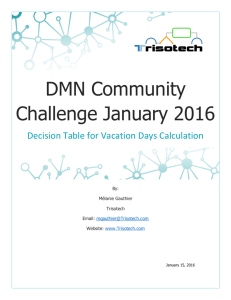How to write the results section for ANOVA
advertisement
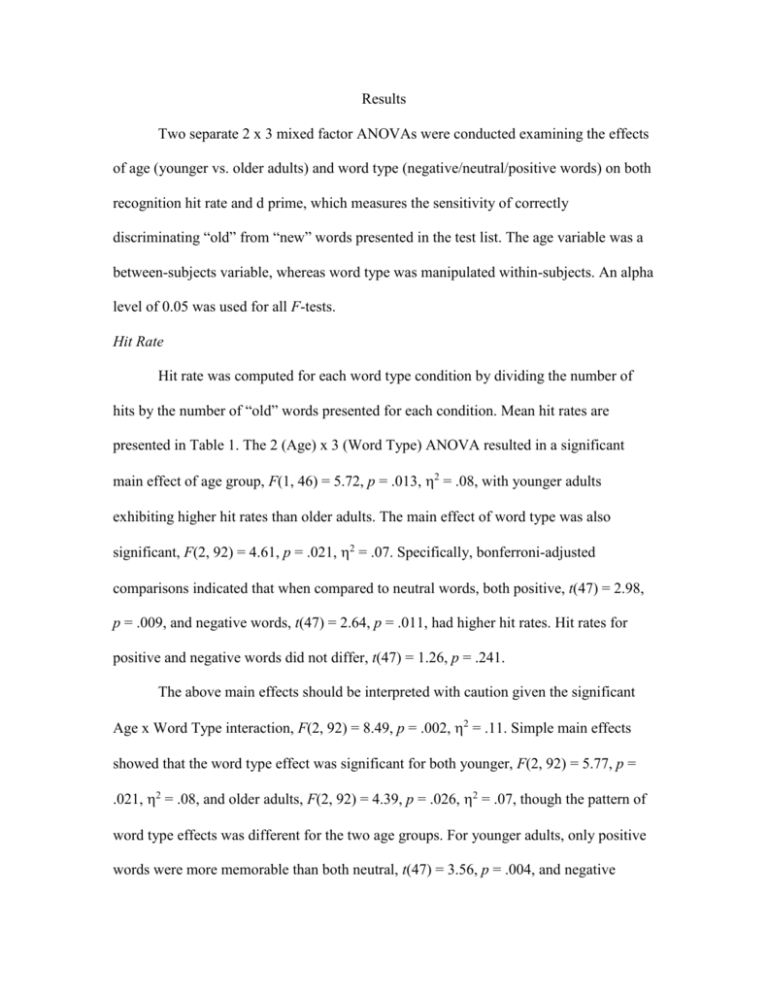
Results Two separate 2 x 3 mixed factor ANOVAs were conducted examining the effects of age (younger vs. older adults) and word type (negative/neutral/positive words) on both recognition hit rate and d prime, which measures the sensitivity of correctly discriminating “old” from “new” words presented in the test list. The age variable was a between-subjects variable, whereas word type was manipulated within-subjects. An alpha level of 0.05 was used for all F-tests. Hit Rate Hit rate was computed for each word type condition by dividing the number of hits by the number of “old” words presented for each condition. Mean hit rates are presented in Table 1. The 2 (Age) x 3 (Word Type) ANOVA resulted in a significant main effect of age group, F(1, 46) = 5.72, p = .013, 2 = .08, with younger adults exhibiting higher hit rates than older adults. The main effect of word type was also significant, F(2, 92) = 4.61, p = .021, 2 = .07. Specifically, bonferroni-adjusted comparisons indicated that when compared to neutral words, both positive, t(47) = 2.98, p = .009, and negative words, t(47) = 2.64, p = .011, had higher hit rates. Hit rates for positive and negative words did not differ, t(47) = 1.26, p = .241. The above main effects should be interpreted with caution given the significant Age x Word Type interaction, F(2, 92) = 8.49, p = .002, 2 = .11. Simple main effects showed that the word type effect was significant for both younger, F(2, 92) = 5.77, p = .021, 2 = .08, and older adults, F(2, 92) = 4.39, p = .026, 2 = .07, though the pattern of word type effects was different for the two age groups. For younger adults, only positive words were more memorable than both neutral, t(47) = 3.56, p = .004, and negative words, t(47) = 3.01, p = .010, whereas hit rates for neutral and negative words were not statistically different, t(47) = 0.72, p = .492. With older adults, compared to the neutral condition, both positive, t(47) = 5.48, p = .002, and negative words, t(47) = 9.71, p < .001, had higher hit rates, though the comparison of positive and negative words was not statistically significant, t(47) = 0.69, p = .589. d prime As with hit rate analyses, a 2 (Age) x 3 (Word Type) mixed factor ANOVA was conducted on d prime values computed from hit and false alarm rates (see Table 1 for means). The main effects of Age, F(1, 46) = 4.99, p = .022, 2 = .08, and Word Type, F(1, 46) = 5.97, p = .011, 2 = .09, were identical in pattern to those found in the hit rate analyses, and so are not further discussed. An Age x Word Type interaction was again observed, F(2, 92) = 7.34, p = .007, 2 = .10, though the pattern of word type effects was slightly different than that found for hit rates. Simple main effects of word type were again significant for both younger, F(1, 46) = 5.21, p = .019, 2 = .07, and older adults, F(1, 46) = 5.75, p = .012, 2 = .08. Bonferroni-adjusted simple comparisons for younger adults showed …..yada, yada, yada regression: R2 for model, splitting data sets, stbs with ts

